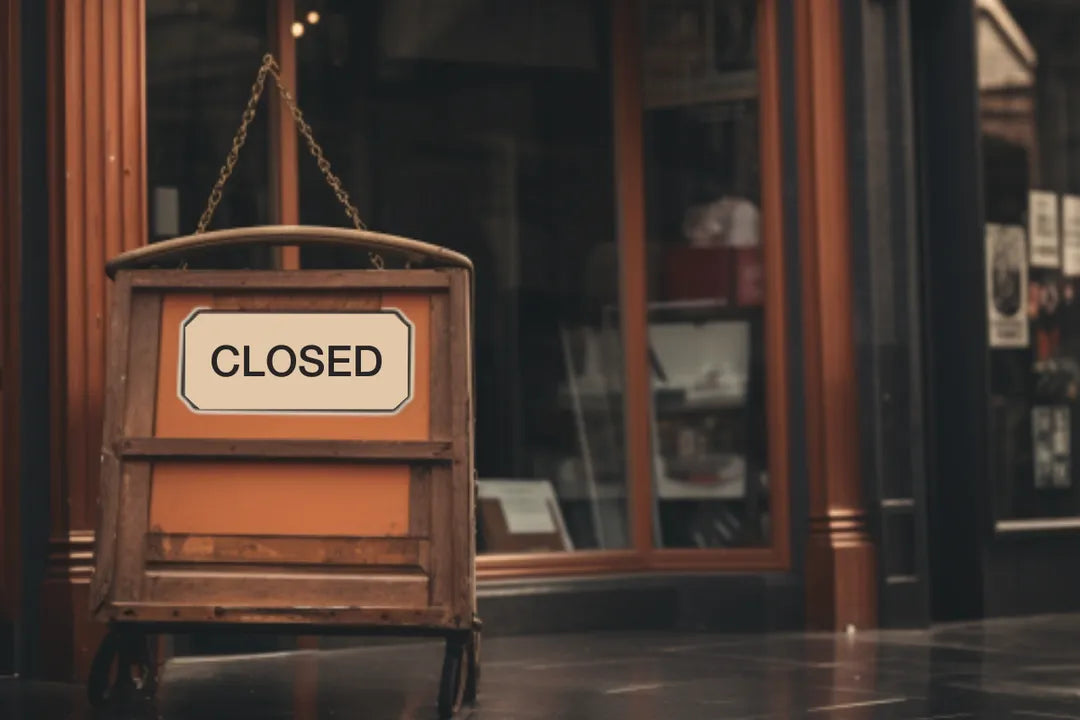
The UK Retail Sector in Crisis: Insolvencies Surge Amid Economic Pressures
Table of Contents
- Key Highlights:
- Introduction
- The Current State of Retail Insolvencies
- The Untenable Costs of Physical Retail
- The Role of Technology in Retail Transformation
- The Future of Retail: A Leaner, Tech-Driven Landscape
- Conclusion
- FAQ
Key Highlights:
- Retail insolvencies in the UK rose by 16% in May 2025 compared to April, indicating a troubling trend for the industry.
- Tax hikes and rising operational costs, coupled with changing consumer behaviors, are straining traditional retail businesses.
- The retail landscape is undergoing a significant transformation, where agility and digital integration are essential for survival.
Introduction
The UK retail sector is facing a significant crisis, marked by a troubling rise in company insolvencies. Recent data reveals that insolvencies in the retail trade surged to 192 in May 2025, up from 165 in April and 160 in the same month last year. This alarming trend raises critical questions about the future of retail in a rapidly evolving economic environment. As consumers shift their priorities and government policies create additional pressures, traditional retailers find themselves at a crossroads. In this article, we explore the factors contributing to this crisis, the structural changes within the industry, and what the future may hold for retailers across the UK.
The Current State of Retail Insolvencies
The latest figures paint a stark picture of the UK retail landscape. With a 16% increase in insolvencies in just one month, the sector is experiencing a wave of financial distress. Experts are suggesting that this rise is not merely a post-pandemic correction, but rather a sign of deeper, more systemic challenges. Gordon Thomson, a restructuring partner at RSM UK, attributes this distress to recent government fiscal policies, particularly increases in corporation tax and National Insurance contributions. For many retailers operating on thin margins, these heightened costs are proving unmanageable.
The Impact of Government Policy
The government’s fiscal tightening has exacerbated existing vulnerabilities within the retail sector. The increase in tax obligations has squeezed the financial viability of many businesses that were already struggling. Retailers, particularly those reliant on discretionary spending, are feeling the brunt of these changes. As living costs rise, consumers are becoming more cautious, prioritizing essential expenditures over non-essentials, which includes fashion and luxury items.
Shifting Consumer Behavior
Consumer behavior is shifting dramatically in response to economic pressures. While there are signs of a slow recovery in consumer confidence, spending habits have become increasingly cautious. With soaring prices for everyday necessities, disposable income is dwindling, forcing consumers to rethink their purchasing priorities. Retailers that focus on non-essential goods are particularly vulnerable to this shift, as buyers hold back on spending in uncertain economic times.
The Untenable Costs of Physical Retail
One of the most pressing issues facing brick-and-mortar retailers is the growing burden of operational costs. While online shopping continues to thrive, traditional high-street stores struggle with fixed expenses that can no longer be justified in the current climate. Many industry insiders are calling for a reassessment of business rates and National Insurance thresholds, arguing that these policies disproportionately affect physical stores that are already at a disadvantage compared to their online counterparts.
The Digital Divide
A clear divide is emerging between retailers that have successfully adapted to the digital age and those that have not. The acceleration of consumer expectations, driven by technological advancements, has left many legacy retailers lagging behind. The ability to leverage data analytics, optimize supply chains, and engage consumers across digital platforms has become essential for survival. Retailers must now operate more like tech companies, embracing innovation and agility to stay relevant.
The Role of Technology in Retail Transformation
In the face of mounting challenges, technology has become a crucial ally for retailers looking to navigate the evolving landscape. By adopting data-driven strategies, retailers can better understand consumer behavior and preferences, allowing for more personalized experiences. The rise of e-commerce has shifted the competitive focus, where those who fail to integrate technology risk obsolescence.
Leveraging Analytics for Competitive Advantage
Retailers that harness the power of analytics can gain valuable insights into consumer trends and optimize their offerings accordingly. By analyzing purchasing patterns and preferences, businesses can tailor their marketing efforts and product assortments to meet the needs of their target audience. This level of personalization not only enhances customer satisfaction but also fosters loyalty—a crucial factor in a competitive marketplace.
Cultivating Online Communities
Particularly in the fashion sector, the opportunity to cultivate niche online communities presents a unique avenue for growth. Engaging with consumers through social media and other digital platforms allows brands to build relationships that transcend traditional transactional interactions. By creating experiences that resonate with consumers on a personal level, retailers can differentiate themselves in a crowded market.
The Future of Retail: A Leaner, Tech-Driven Landscape
As the retail landscape continues to evolve, the pressure on traditional businesses to adapt is intensifying. If the trend of rising insolvencies persists, May 2025 may well mark a pivotal moment in the history of British retail. The industry is on the brink of a transformation, where those unable to pivot towards a leaner, technology-driven model may find themselves at risk of extinction.
The Emergence of New Retail Models
The challenges faced by traditional retailers are prompting the emergence of new retail models. Brands that prioritize agility, innovation, and customer-centric approaches are likely to thrive in the face of adversity. By embracing e-commerce, optimizing logistics, and fostering direct relationships with consumers, these forward-thinking retailers are setting the stage for a new era of retail.
Policy Recommendations for a Sustainable Future
To support the recovery of the retail sector, policymakers must consider reforms that alleviate the financial pressures faced by brick-and-mortar businesses. A re-evaluation of business rates, tax structures, and support for digital transformation initiatives could provide the necessary lifeline for struggling retailers. By fostering an environment that encourages innovation and adaptability, the government can play a crucial role in shaping the future of retail.
Conclusion
The current crisis in the UK retail sector serves as a stark reminder of the challenges posed by economic pressures and shifting consumer behaviors. As insolvencies rise and traditional business models face scrutiny, the need for adaptation and innovation has never been more critical. By embracing technology and rethinking operational strategies, retailers can navigate this turbulent landscape and emerge stronger in the face of adversity.
FAQ
What factors are contributing to the rise in UK retail insolvencies? The rise in retail insolvencies is primarily driven by fiscal tightening from the government, including increased taxes and National Insurance contributions, as well as changing consumer behavior that prioritizes essential spending over discretionary purchases.
How is consumer behavior changing in the current economic climate? Consumers are becoming more cautious with their spending due to high living costs, leading to a decline in discretionary purchases, particularly in sectors such as fashion and lifestyle.
What role does technology play in the future of retail? Technology is crucial for retailers to stay competitive. By leveraging data analytics, optimizing supply chains, and engaging consumers through digital platforms, retailers can create personalized experiences and foster customer loyalty.
What can policymakers do to support the retail sector? Policymakers can reassess business rates, tax structures, and provide support for digital transformation initiatives to alleviate financial pressures on brick-and-mortar retailers, enabling them to adapt and thrive in a changing landscape.
What does the future hold for traditional retail? The future of traditional retail hinges on its ability to adapt to a leaner, technology-driven model. Retailers that embrace innovation and prioritize agility are likely to succeed in the evolving marketplace.
POWER your ecommerce with our weekly insights and updates!
Stay aligned on what's happening in the commerce world
Email Address
Handpicked for You

08 September 2025 / Blog
How to Avoid Greenwashing: Rules, Real-World Examples, and a Practical Playbook for Honest Environmental Claims
Read more
08 September 2025 / Blog
Klaviyo 2025: How its AI-Driven CRM Transforms Shopify Email Marketing and the Customer Experience
Read more
08 September 2025 / Blog


